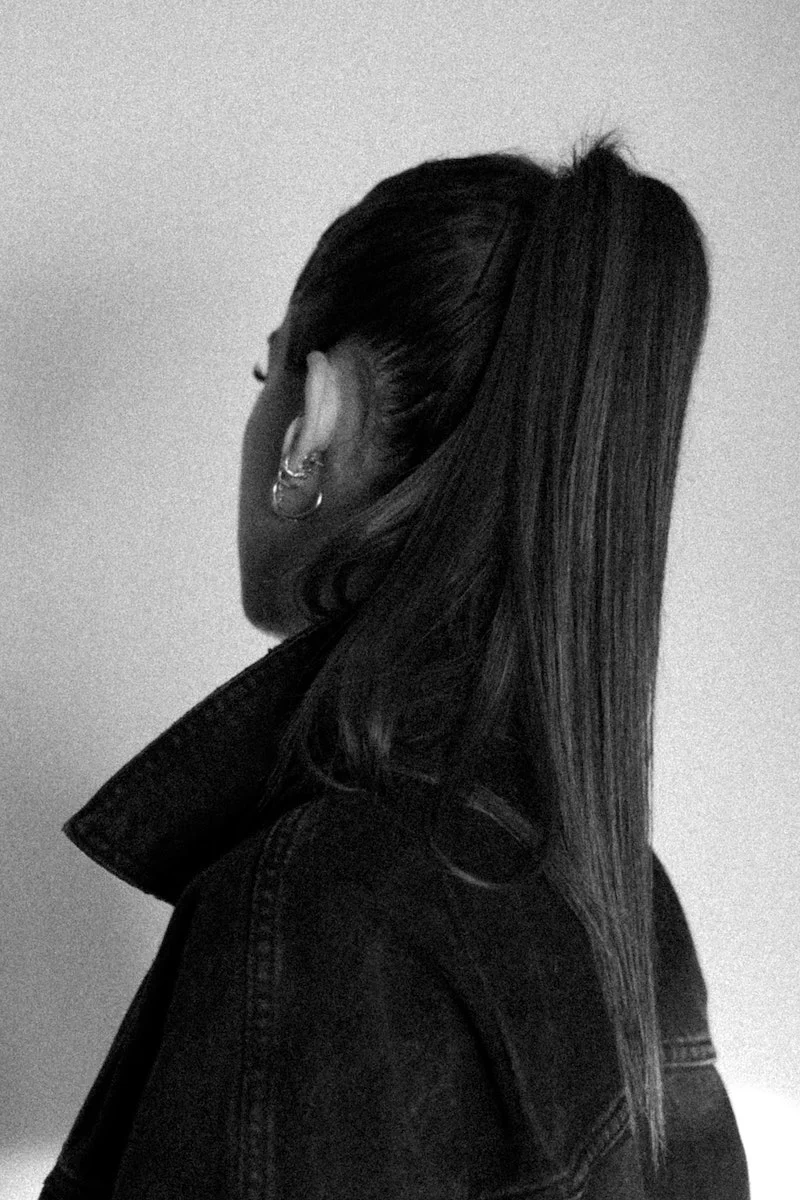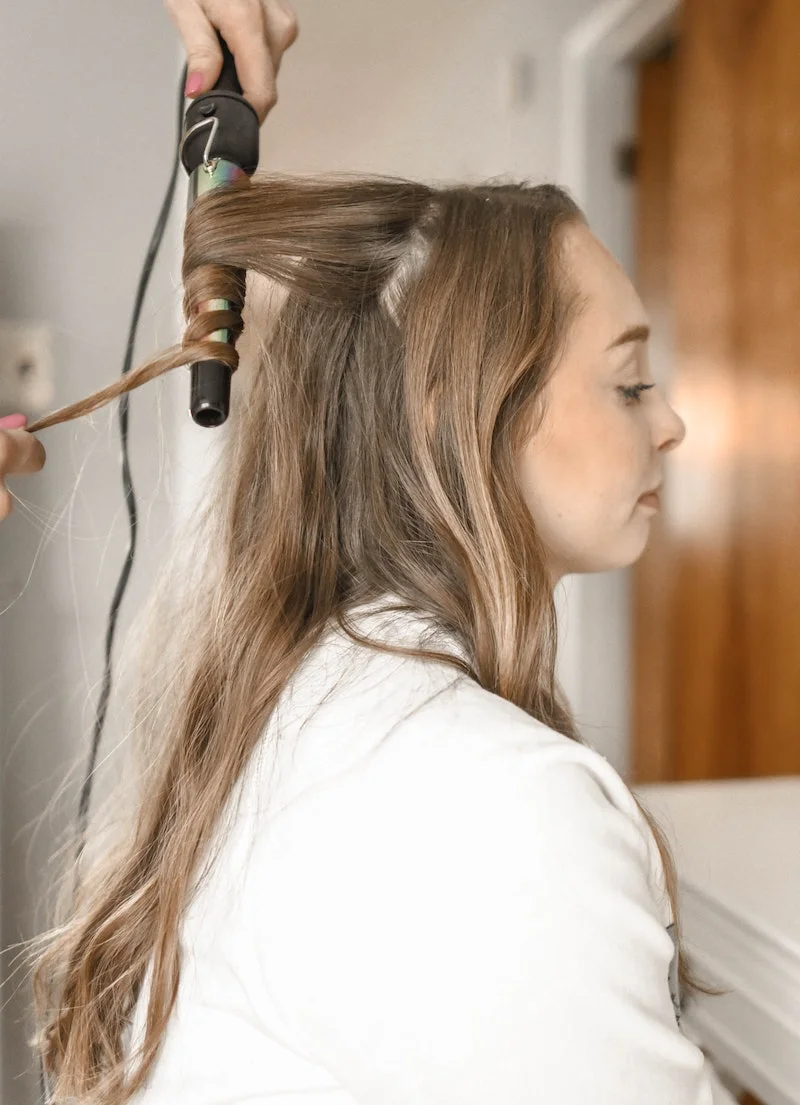A Stylist’s Honest Guide to Fixing (and Preventing) Hair Damage
After spending more time than I can count behind the salon chair, you start to see hair in a whole new light. It’s not just about a good cut or a fresh color; it’s about the fabric itself. I’ve seen it all—hair that’s been pampered and hair that’s been, well, put through the wringer without anyone even realizing it.
In this article
Honestly, the biggest problems I see every day—breakage, relentless frizz, thinning—almost never happen overnight. They creep in. They’re the result of tiny, everyday habits that slowly chip away at your hair’s strength. So many people sit in my chair, totally frustrated and holding a bag of expensive products, asking me why nothing is working. And the truth is, you can’t bottle-fix a problem when your daily routine is the root cause.
My goal here isn’t to give you a bunch of strict, joyless rules. It’s to pull back the curtain and share what I’ve learned from thousands of hours of hands-on work. When you understand why your hair acts the way it does, you gain all the power. This is about working smarter, not just buying more stuff. Let’s get into it.

First Things First: Know Your Hair and Your Scalp
Before we can even talk about damage, we have to know what we’re trying to protect. Think of a single strand of hair like a tiny rope. It has a few layers, but the two we really care about are the cortex (the middle) and the cuticle (the outside).
The cortex provides all the strength, color, and texture. It’s packed with protein chains that give your hair its backbone. The cuticle is its shield. Picture it like the shingles on a roof. When your hair is healthy, those shingles lie flat, smooth, and tight. This smooth surface reflects light (hello, shine!) and locks in moisture. But when hair gets damaged, those shingles get lifted, cracked, or completely stripped away. That’s when hair feels rough, tangles like crazy, and looks dull and frizzy.
By the way, you can’t talk about hair without talking about your scalp. You can’t grow healthy plants in bad soil, right? Your scalp is the soil for your hair. If it’s clogged with product buildup or stripped by harsh cleansers, it can’t do its job, which can lead to irritation and even slow down new growth.

Quick Tip: Figure Out Your Hair’s Porosity
Ever wonder why some products work miracles for your friend but make your hair a greasy mess? It’s probably porosity—your hair’s ability to absorb and hold on to moisture. And you can figure yours out right now.
It’s called the float test. Take a single strand of clean, dry hair (no product on it!) and drop it into a glass of water. Wait a minute or two and see what happens:
- If it floats at the top: You have low porosity hair. Your cuticles are tightly packed. It’s hard for moisture to get in, so heavy products with butters and oils will just sit on top and weigh it down. Think lightweight, water-based products.
- If it sinks to the bottom: You have high porosity hair. Your cuticles are more open, so your hair absorbs moisture easily… but it loses it just as fast. It craves richer creams and oils to seal in that hydration.
- If it hangs out in the middle: You have medium or “normal” porosity. Congrats, you’re in the sweet spot! Most products will work well for you.
Knowing this one thing can completely change your product-buying game.

Mechanical Damage: The Slow and Steady Killer
This is the big one. Mechanical damage is the physical wear and tear from brushing, styling, and just plain living. It’s a quiet enemy that causes more breakage than most people think.
That Killer Ponytail and Traction Alopecia
We all love a sharp, slicked-back look. But pulling your hair into a super-tight style day after day puts constant strain on your hair follicles. This can lead to something called traction alopecia, which is just a technical term for hair loss from persistent pulling. The first signs are subtle—maybe your scalp feels sore when you take your hair down, or you see tiny little bumps around your hairline. Over time, it can cause very real thinning.
I’ll never forget a young dancer who came to me with noticeable thinning all along her hairline. Years of severe, slicked-back buns for practice had literally weakened the follicles. We put her on a hair recovery plan: no more tight styles, gentle scalp massages to get blood flowing, and a lot of patience. It took a good six months of consistent care before we saw significant new growth, but her hair did recover. It was a serious lesson in how much physical stress hair can take… and when it breaks.

How to Fix It:
- Vary your styles. Seriously, give your hair a break. Alternate between loose braids, low ponytails, and just wearing it down.
- Switch to soft ties. Ditch the elastics with the metal clasps. They’re hair-snagging monsters. Instead, opt for fabric scrunchies (silk or satin ones are amazing and cost under $10 on Amazon) or those coiled plastic ties that distribute pressure more evenly.
- NEVER sleep in a tight style. Tossing and turning adds friction to already stressed-out follicles. If you need to tie it back, a loose “pineapple” ponytail on top of your head with a satin scrunchie is the way to go.
- Here’s a quick win you can do tonight: Swap your cotton pillowcase for a satin or silk one. It’s a total game-changer. Your hair glides over it instead of snagging, which means less friction, less frizz, and less breakage while you sleep. You can find great satin ones for under $20.

Rethink How You Brush and Detangle
That sound of a brush ripping through tangles? It’s the stuff of nightmares for a stylist. That’s the sound of your hair’s cuticle being torn to shreds.
The number one rule is to always detangle from the ends up. If you start at the root and hit a knot, you’re just pushing all that force down, tightening the knot and putting immense pressure on the follicle. Start by gently working through the bottom few inches, then move up a bit more, and repeat until you can glide the brush all the way through.
How to Fix It:
- Use the right tool for the job. A wide-tooth comb is your best friend for detangling, especially on wet hair. A brush with flexible bristles is better for dry hair.
- Towel-dry gently. Instead of rubbing your hair with a rough terrycloth towel (which roughs up the cuticle and causes frizz), gently squeeze the water out with an old t-shirt or a microfiber towel. It makes a huge difference.
- For curly and coily hair: The best time to detangle is in the shower when your hair is drenched in conditioner. The “slip” from the conditioner lets you work through tangles with your fingers or a comb without causing breakage. Dry brushing is your enemy!

Thermal Damage: Turning Down the Heat
Heat tools are great, but they operate at temperatures that can literally boil the water inside your hair shaft. That “burnt hair” smell is the scent of keratin protein being permanently fried. Once that damage is done, it’s done. You can only manage it until it gets cut off.
Your Shower and Your Sink
Super hot showers feel amazing, but they strip your scalp of its natural protective oils and cause your hair’s cuticle to swell open. This leads to moisture loss and, if you have colored hair, it lets the color molecules escape much faster. It’s a leading cause of color fade.
Another culprit? Hard water. If your water is full of minerals like calcium and magnesium, they build up on your hair, leaving it dull, dry, and brittle. I can often feel the difference in a client’s hair just based on what part of town they live in.

How to Fix It:
- Use lukewarm water. It’s more than enough to get your hair clean without being harsh. Finish your conditioning with a quick, cool rinse to help seal that cuticle back down. You’ll feel the difference in smoothness instantly.
- Invest in a shower filter. If you think you have hard water, this is a must. A good showerhead filter can remove a lot of those minerals and chlorine. You can find great ones from brands like Aquabliss or Culligan online, and they usually run between $30 and $50. It’s a worthwhile investment for both your hair and skin.
Smarter Heat Styling
Most people use way too much heat. I’ve seen clients using flat irons at 450°F on fine, color-treated hair—a temperature hot enough to cook chicken. Please, don’t do this.
How to Fix It:
- Heat protectant is NON-NEGOTIABLE. Always. It creates a buffer that helps distribute heat more evenly. Think of it as oven mitts for your hair.
- Know your magic number. You don’t need to blast your hair. For fine, damaged, or chemically treated hair, stay below 350°F (175°C). If you have healthy, medium-textured hair, you can go up to about 400°F (205°C). Only very coarse, resistant hair might need something higher, and even then, be careful.
- One slow pass is better than five fast ones. If you have to keep going over the same section, your temperature is too low or your sections are too thick. It’s much less damaging to do one deliberate, steady pass at the right temperature.
- Make sure your hair is 100% bone dry. That sizzling sound you hear when an iron hits damp hair? That’s the water inside your hair flash boiling. It’s one of the fastest ways to destroy your hair.

Chemical Damage: When Products Go Wrong
What you put on your hair matters just as much as how you handle it. The wrong stuff can create a whole new set of issues.
The Dry Shampoo Dilemma
Look, dry shampoo is a fantastic tool for emergencies. But it was never meant to be a replacement for actual washing. It doesn’t clean anything; it just uses powders and alcohol to soak up oil. The oil, dirt, and product are all still sitting on your scalp.
When you use it too often, that gunk builds up and can clog your hair follicles. A clogged follicle is an unhappy follicle, which can lead to itchiness, irritation, and can even mess with healthy hair growth.
How to Fix It:
- Use dry shampoo for a day, maybe two, max. Then you need to actually wash your hair.
- Add a clarifying shampoo to your routine. Use it once every week or two to get rid of all that stubborn buildup. A good one will cost you between $15 and $30 and lasts forever. Heads up! A clarifying shampoo will make your hair feel squeaky clean—almost like straw. This is normal. You MUST follow it up with a deep, hydrating conditioner or mask to put moisture back in. Don’t skip this step!
- Good to know: If you have hard water, look for a “chelating” shampoo instead of (or in addition to) a clarifying one. It’s specifically formulated to grab and remove those minerals.
Inspiration:

Is my hair damaged or just dry? And what’s the difference in treatment?
It’s a crucial question. Think of it this way: dry hair is thirsty, while damaged hair is wounded. Dryness is a lack of moisture, making hair feel rough and brittle. Damaged hair has cracks and gaps in its structure, often from bleach or heat, making it weak and prone to snapping. A moisturizing mask, like SheaMoisture’s Manuka Honey & Mafura Oil Intensive Hydration Masque, is perfect for dryness. But for true damage, you need a bond-builder. Products like Olaplex No. 3 or K18 work on a molecular level to repair the broken disulfide bonds that give hair its strength, literally rebuilding it from the inside out.










